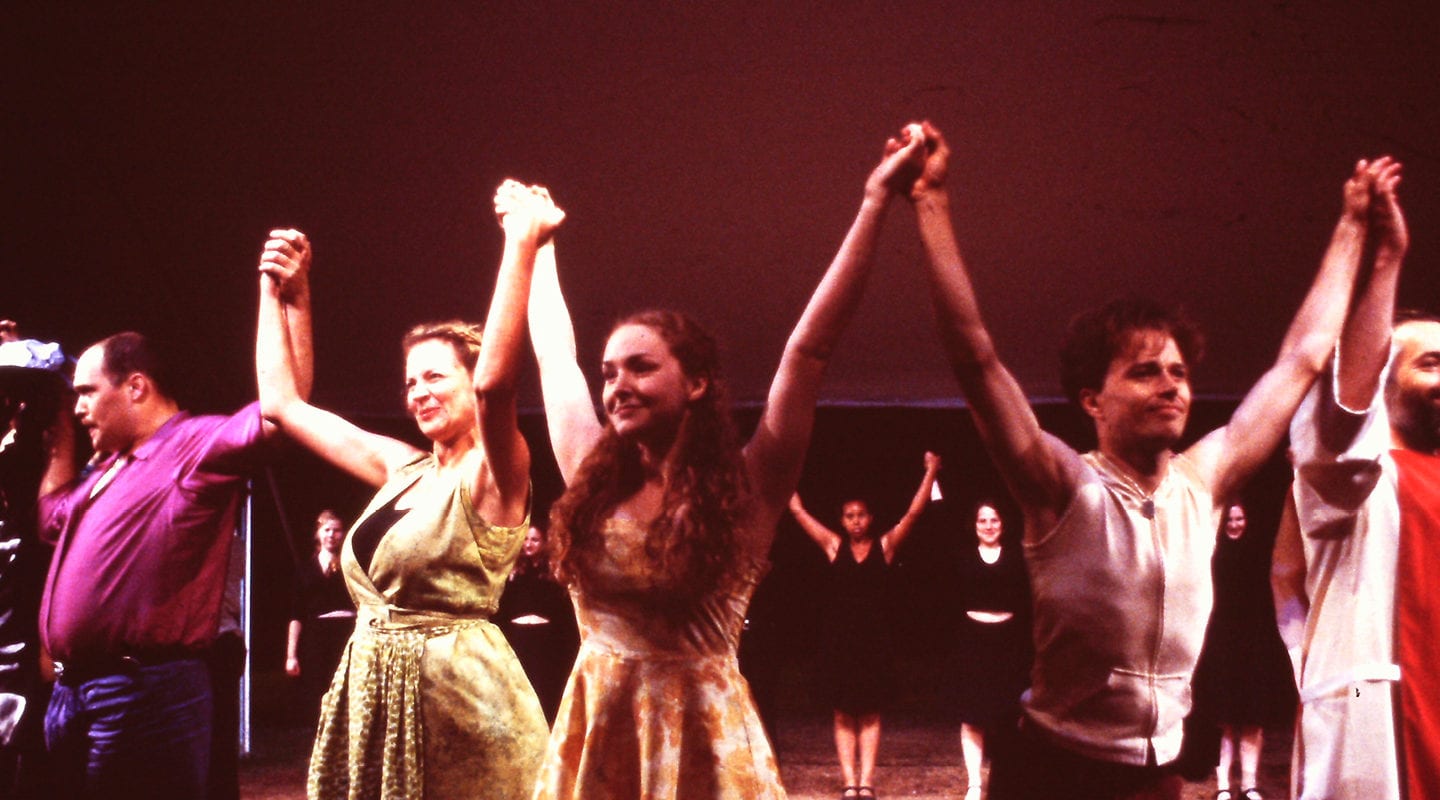Posted December 3, 2018
Originally published on December 2, 2018 by HVSF Associate Artistic Director Sean McNall for The Highlands Current (“Teenagers In Love“). McNall is advising the Haldane High School student production of Romeo and Juliet this month.
If I were to ask, “What comes into your mind when I say Shakespeare?” there’s a strong possibility you’d say, “O Romeo, Romeo, wherefore art thou Romeo?” — words spoken by a young woman, smitten at first glance with a mortal enemy, rationalizing her newly discovered affection.
Shakespeare’s plays are filled with these situations, moments that express “the human condition,” something immutable from generation to generation, continent to continent, despite all the differences in knowledge, culture and emphasis.
This is the reason why his plays continue to be produced everywhere, not just in English, but also in translation. Romeo and Juliet fall in love and marry in Bulgarian, Romeo kills Tybalt in Mandarin and Prince Escalus banishes Romeo from Verona in Klingon, Esperanto and Elfish. Shakespeare’s characters are angry, happy, sad, jealous, envious, untrustworthy, deceptive, generous, forgiving … experiencing nearly every emotion you can think of, and every human situation.
Also, the burning social questions in today’s dysfunctional society — the status of women, class inequality, racism, intolerance, crime, war, disease — are the same issues which feature in his plays. Shylock is hated still, Caliban remains enslaved, Hotspur rages on and Cordelia hangs yet from the rafters.
Of course, one of the most popular arguments against Shakespeare’s relevance is the language in which the plays are written. It can be rough going if you’re reading Romeo and Juliet for the first time and trying to make sense of it. But there is a way around this: Watch the play! Shakespeare wrote Romeo and Juliet to be performed, not to be read in wretched isolation. By seeing a group of actors embodying the characters, it’s possible to get a good sense of the story without looking up every unfamiliar word and becoming discouraged.
The more plays that are enjoyed in this way — and enjoyment is paramount — the clearer a picture emerges of the universal and relevant situations which Shakespeare wrote about.

